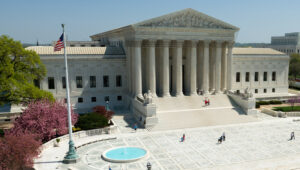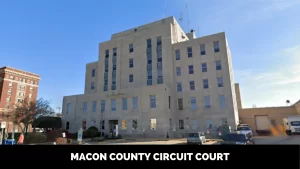Middle District of Georgia
Introduction
The Middle District of Georgia is a federal judicial district that serves a vast region in the heart of the state. With courthouses located in Macon, Columbus, Albany, Athens, and Valdosta, it carries out the important work of the federal judiciary across central and southern Georgia. The Middle District has a long and interesting history, and continues to take on a significant caseload covering both civil and criminal matters.
Overview of the Middle District of Georgia
Geographical Area
The Middle District of Georgia covers a large swath of central and southern Georgia. It has jurisdiction over 48 counties in total, extending from the suburbs of Atlanta down towards the Florida border. Some of the major cities located within the district include Macon, Albany, Columbus, Athens, and Valdosta. The Middle District is geographically situated between the Northern District of Georgia, which covers metropolitan Atlanta, and the Southern District of Georgia located along the Atlantic coast.
Courthouses
There are five courthouse locations utilized by the Middle District of Georgia:
- Macon: William Augustus Bootle Federal Building and United States Courthouse
- Albany: Charles L. Brieant, Sr. Federal Building and United States Courthouse
- Columbus: Frank M. Johnson, Jr. Federal Building and United States Courthouse
- Athens: United States Post Office and Courthouse
- Valdosta: Valdosta Federal Building and United States Courthouse
The Macon courthouse serves as the main location and headquarters for the district. The courthouses provide the facilities for the district judges to preside over cases and for court staff to carry out administrative operations.
Judges and Staff
The Middle District of Georgia has four district court judges who are appointed under Article III of the Constitution. These life-tenured judges preside over cases and controversies within the district. There are also five magistrate judges who handle preliminary criminal matters and some civil cases. In addition, the district has a clerk’s office, probation office, and U.S. Marshal’s office to carry out its duties. The judges and staff serve the Middle District with dedication to the fair administration of justice.
History of the Middle District
Early Years and Establishment
The Middle District of Georgia was officially established on August 11, 1848, when Congress subdivided the state into a Northern and Southern district while creating the Middle District between them. However, the court itself predates the official establishment. It traces its origins back to the District Court for the District of Georgia which was created in 1789 under the first Judiciary Act. Judges would ride circuit across the state hearing cases in various locations, including many that would eventual fall within the Middle District’s boundaries.
The exact location for the Middle District’s headquarters bounced around various cities in early years, including Forsyth, Milledgeville, and Americus. In 1902, the headquarters was settled permanently in Macon. The district grew and evolved in jurisdiction over the ensuing decades. Additional courthouses were constructed around the district in the mid-1900s to meet growing caseloads.
Notable Cases
Over the years, the Middle District has presided over numerous influential and high-profile cases that shaped law and society.
Some of the most famous include:
- United States v. Ballard: The 1946 mail fraud case established the intentionality doctrine limiting prosecution of religious belief.
- Heart of Atlanta Motel v. United States: This landmark 1964 civil rights case upheld the public accommodations provisions of the Civil Rights Act.
- U.S. v. Culpepper: The 1963 decision by Judge Bootle integrated University of Georgia allowing first African American students.
- U.S. v. Greyhound: The 1960 case ruled that segregated bus facilities violated the Interstate Commerce Act.
These and many other cases embody the impact and importance of the Middle District of Georgia throughout history.
Court Operations and Jurisdiction
The Middle District handles a wide range of federal cases and proceedings, both civil and criminal in nature.
Civil Cases
The civil jurisdiction of the court covers cases dealing with federal laws and the U.S. Constitution, such as civil rights, employment discrimination, patent claims, bankruptcy, and federal tax disputes. The district judges oversee these proceedings through various stages, including motions, discovery, and ultimately jury trials if they proceed that far.
Criminal Cases
On the criminal side, the Middle District has jurisdiction over federal crimes committed within its geographic boundaries. These include drug offenses, white collar crimes, public corruption, bank robbery, and other federal felonies and misdemeanors. The district judges handle arraignments, accept guilty pleas, preside over trials, and impose criminal sentences upon conviction.
Bankruptcy Court
The Middle District also has a bankruptcy court that handles personal and corporate bankruptcy filings from around the district under federal bankruptcy law. This provides debt relief through liquidation or reorganization for qualified individuals and businesses seeking a fresh financial start.
The Middle District Today
Current Priorities and Initiatives
Today, the Middle District continues its important mission of providing justice and protecting rights. Some current priorities include ensuring access to the courts for all citizens, efficient resolution of cases, maintaining safe and functional court facilities, and utilizing technology to improve court operations.
For example, an electronic case filing system allows attorneys to file documents online from anywhere. The district also implemented video hearings and conferences to improve accessibility and efficiency, especially during the COVID-19 pandemic. Ongoing training keeps judges and staff abreast of the latest legal developments.
Serving the Public
In all of its operations, the Middle District strives to serve the public effectively through fair and impartial administration of justice. The court has a Help Center available to answer questions and provide assistance to those utilizing its services. The district’s website also provides resources and information on the court system and individual cases.
Through these public services and dedication to upholding the law, the Middle District fosters trust, transparency, and integrity in the judicial process.
Conclusion
For over 175 years, the Middle District of Georgia has steadfastly delivered justice, protected rights, and resolved disputes for citizens throughout its jurisdiction. Its long and interesting history is embedded in some of the nation’s most significant court cases. While the district continues to evolve and innovate, its bedrock principles remain providing fair and speedy trials, equal access to the courts, and adherence to the Constitution. The Middle District’s devoted judges and staff work tirelessly to provide justice in pursuit of these enduring ideals. As the district moves into the future, it will maintain its commitment to serving the people of Georgia.
Frequently Asked Questions
How many district judges serve on the Middle District of Georgia?
There are four federal district judges appointed under Article III of the Constitution who serve the Middle District of Georgia.
What are the boundaries of the Middle District?
The Middle District of Georgia covers 48 counties in central and southern Georgia, with courthouses located in Macon, Columbus, Albany, Athens, and Valdosta.
What kinds of cases does the court handle?
The Middle District handles both civil and criminal cases that fall under federal jurisdiction. This includes areas such as constitutional law, federal crimes, civil rights, bankruptcy, patents, and federal tax cases.
How can I access court records or get information on a case?
Court records and individual case dockets can be accessed through PACER, the online public access system. The Middle District website also provides information and resources regarding the court and its operations.
When was the district established?
The Middle District of Georgia was officially established in 1848 when Georgia was subdivided into three federal judicial districts. However, the court traces its origins to the original District Court for the District of Georgia created in 1789.





